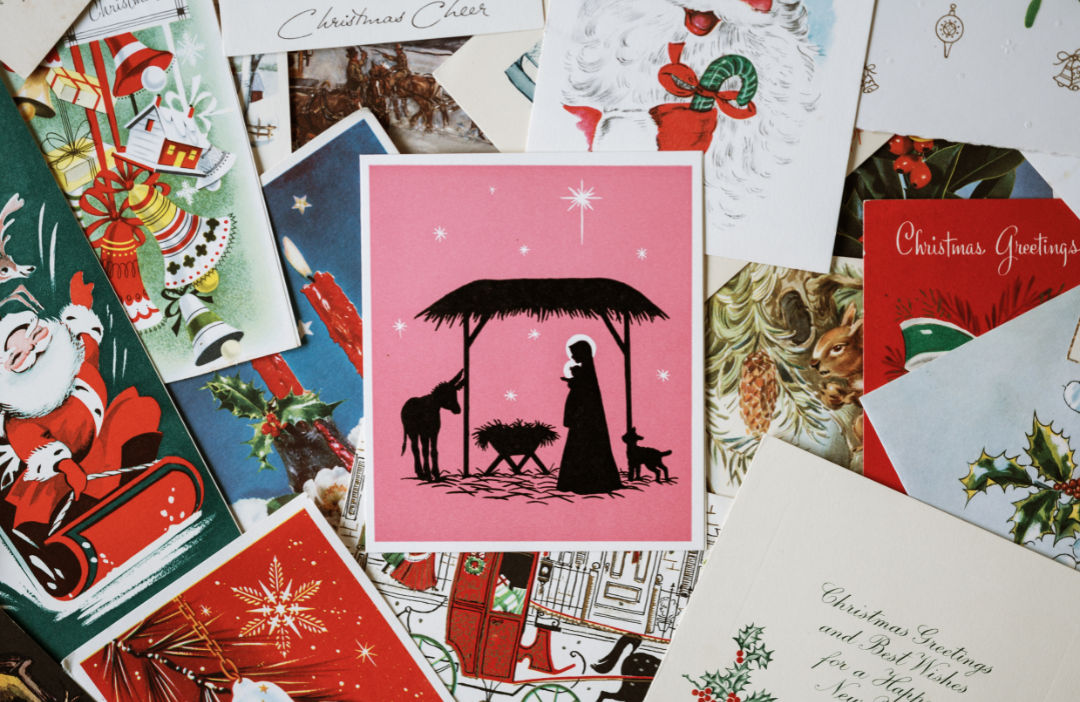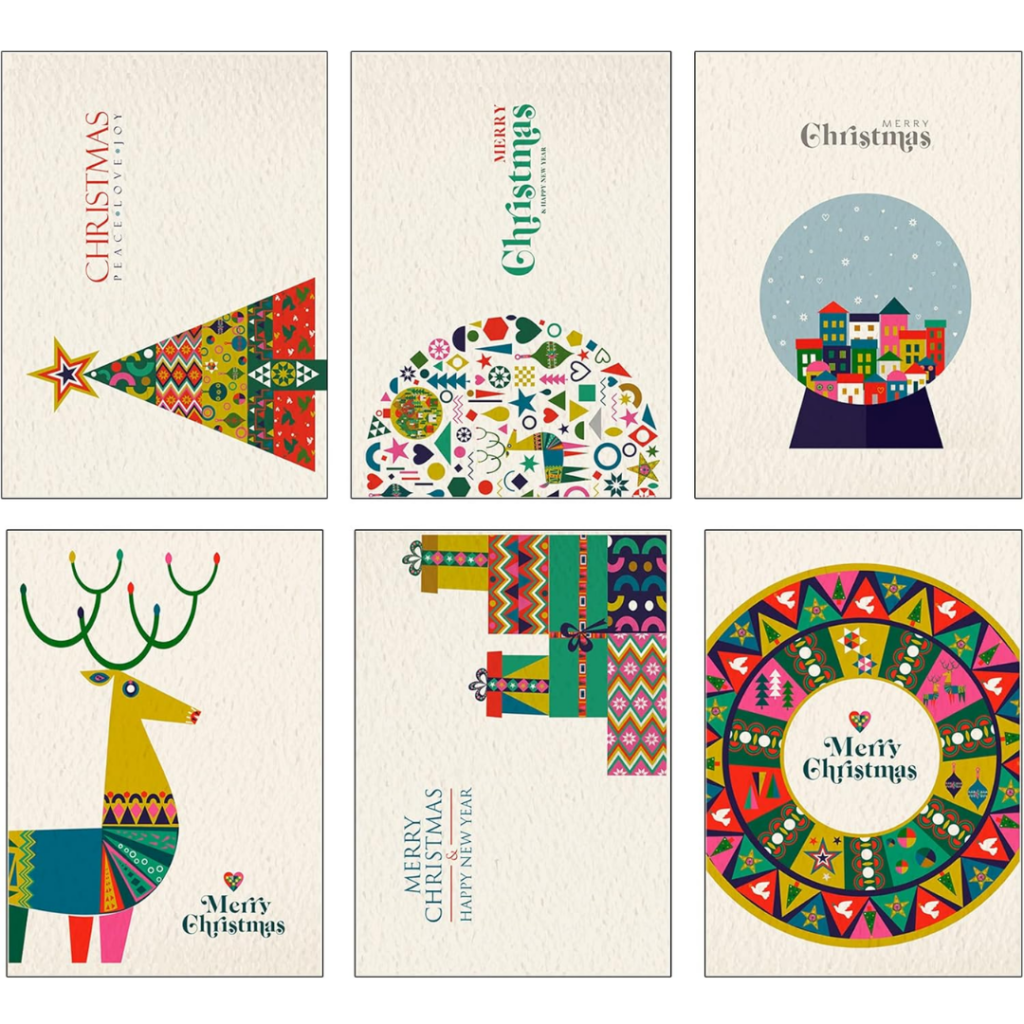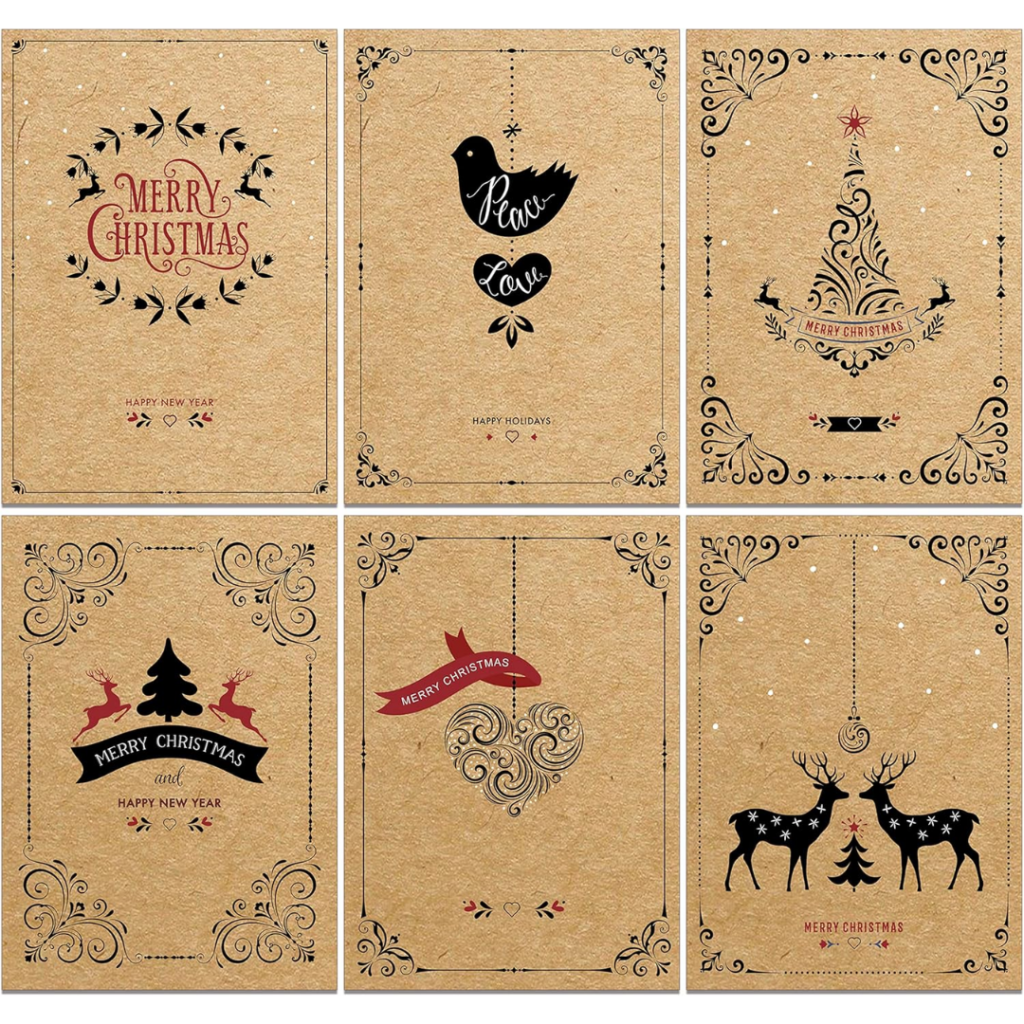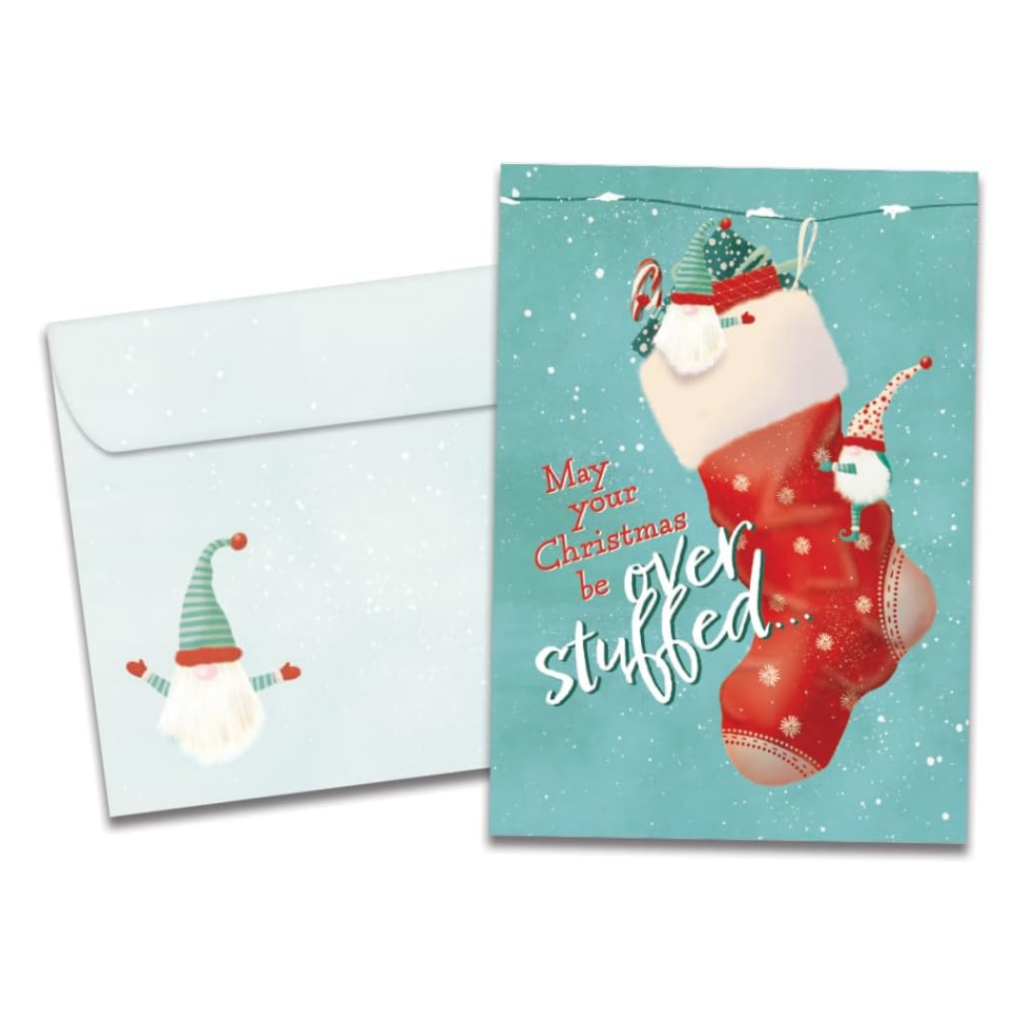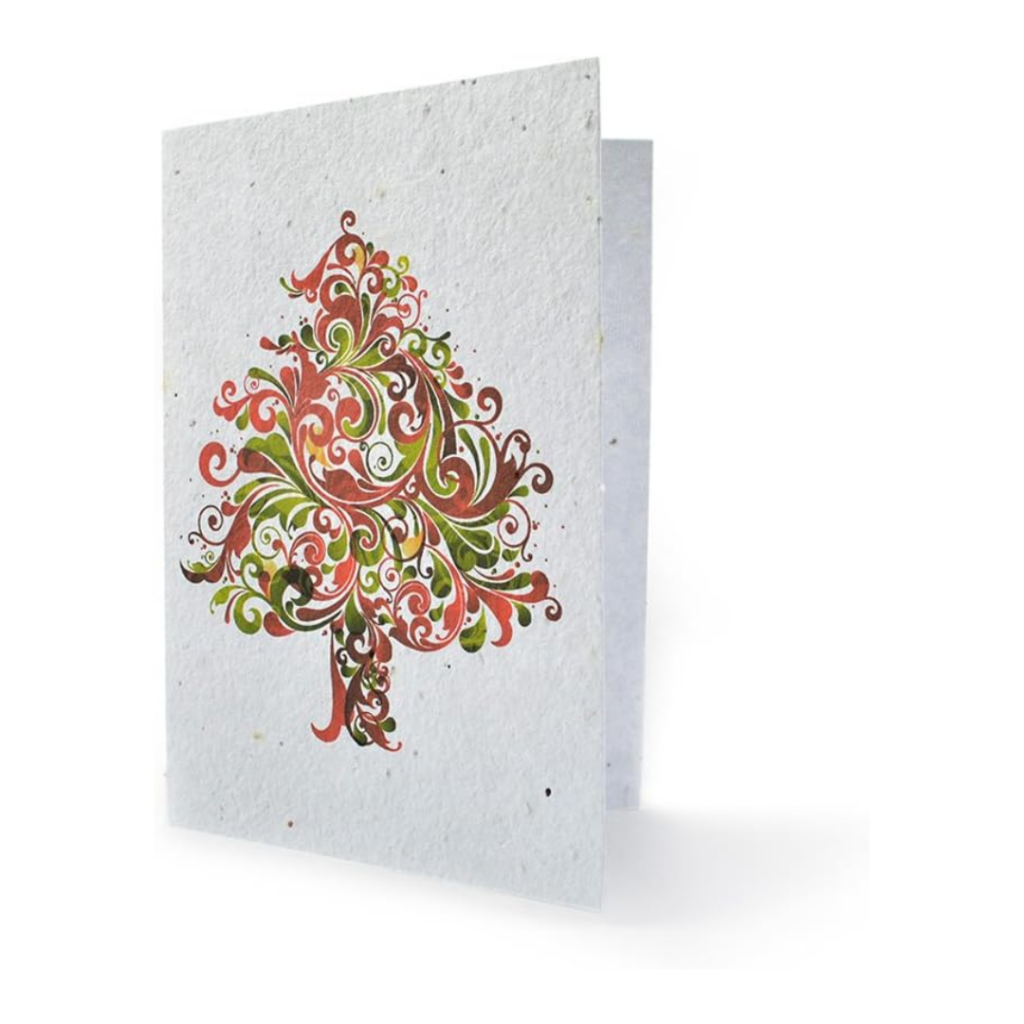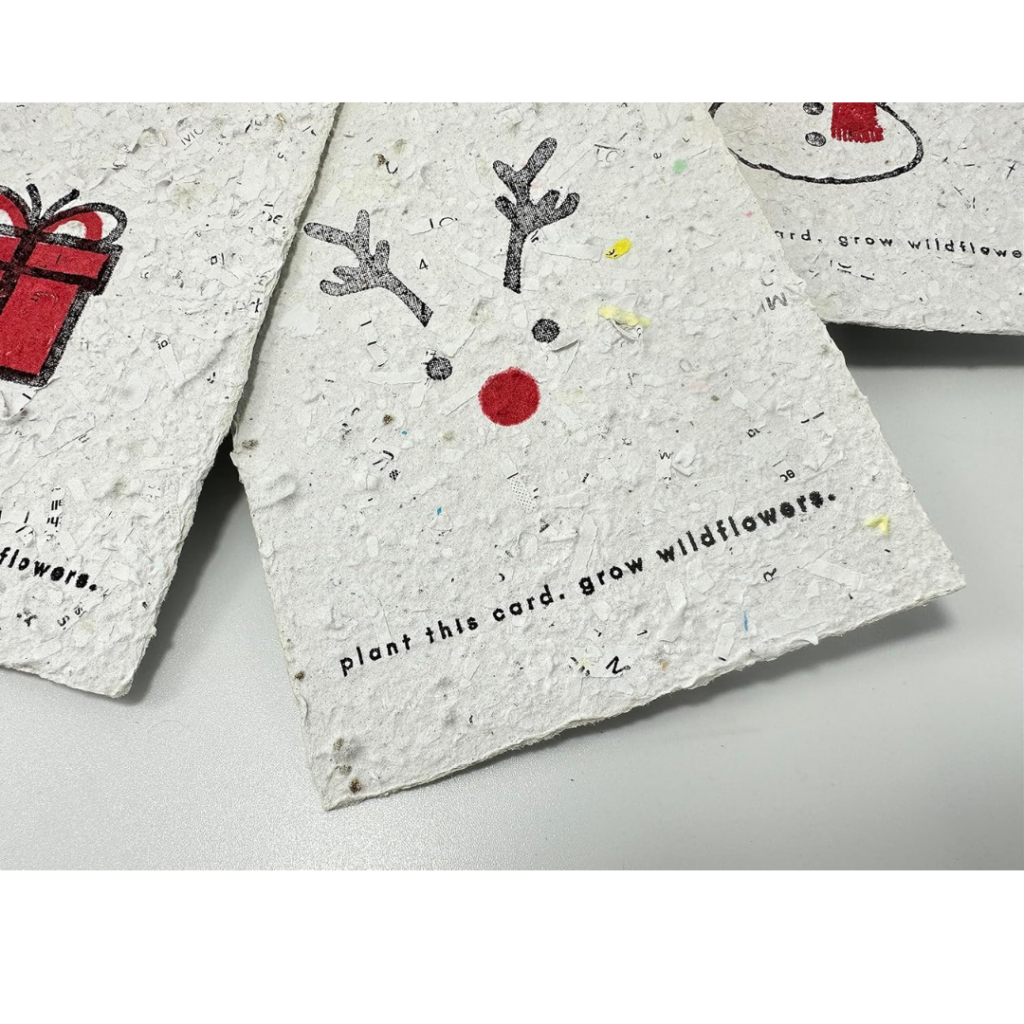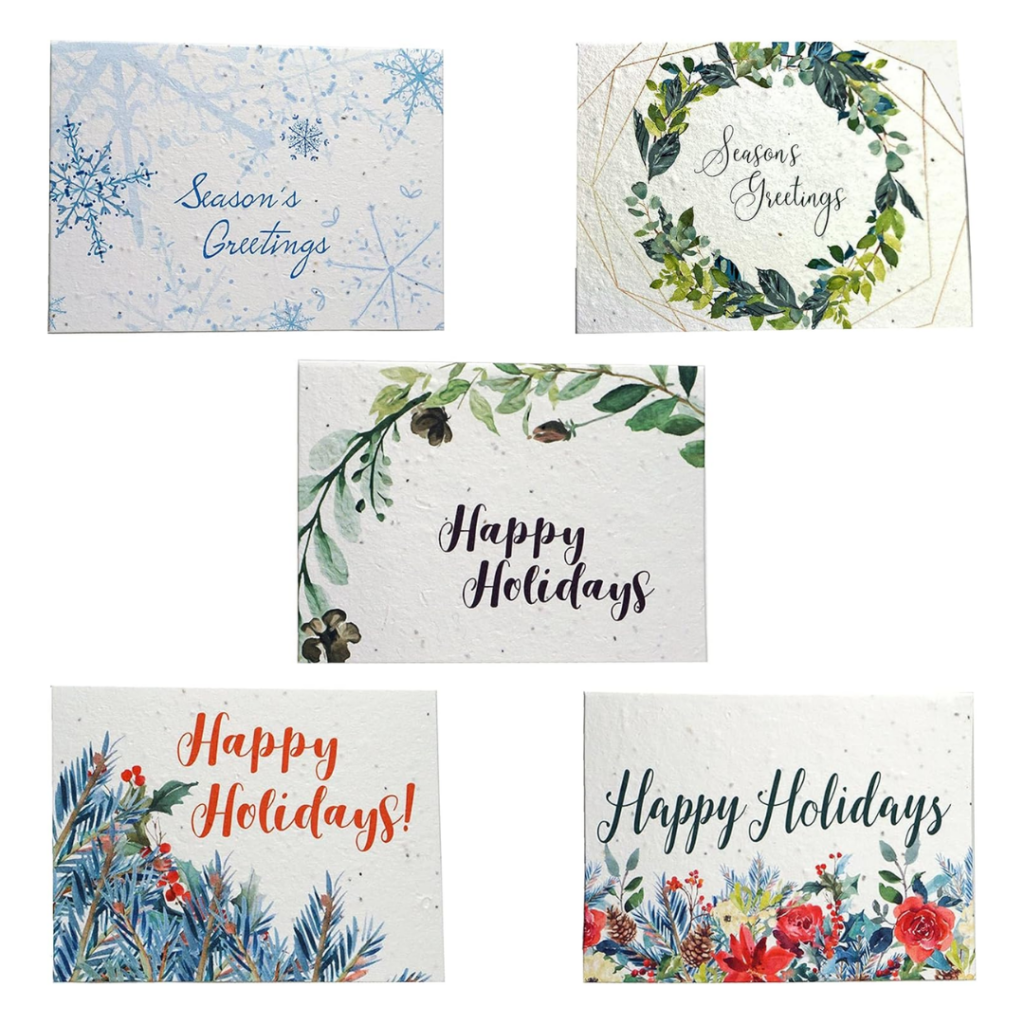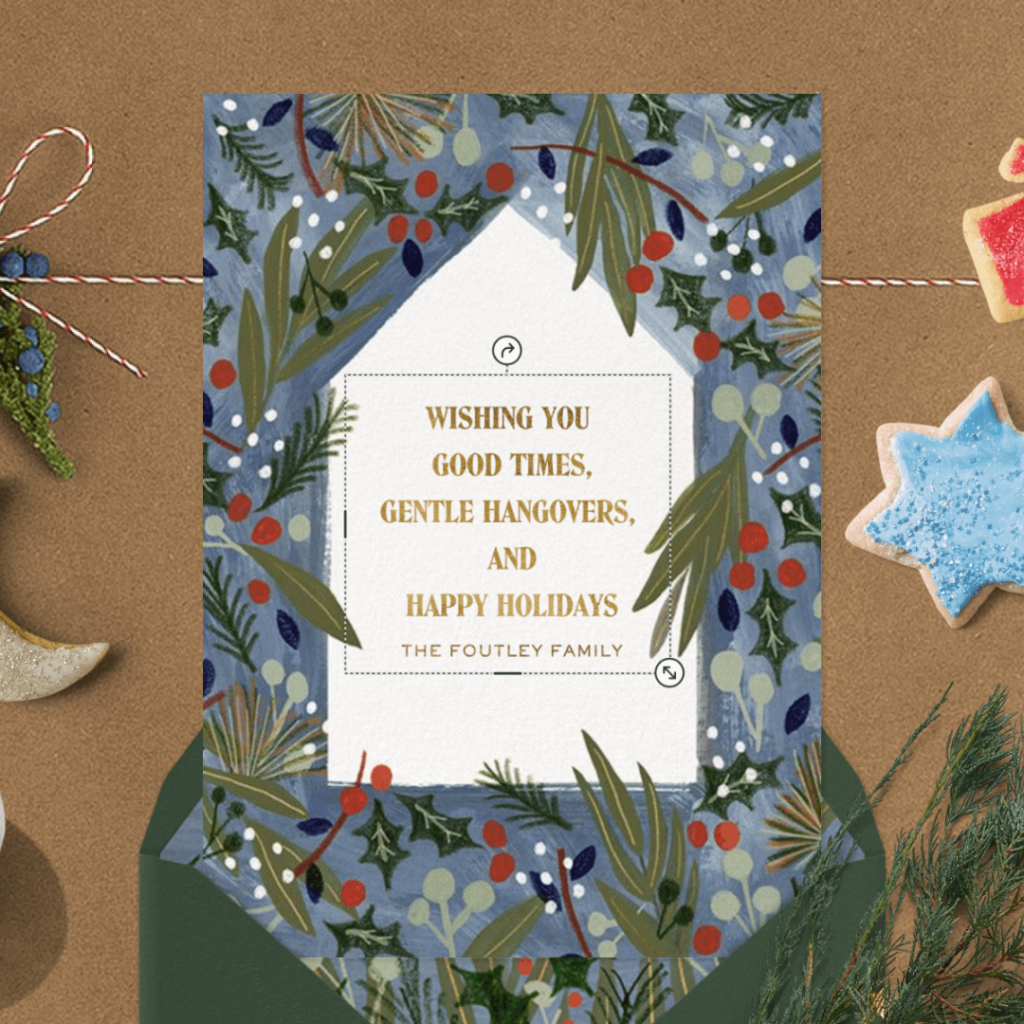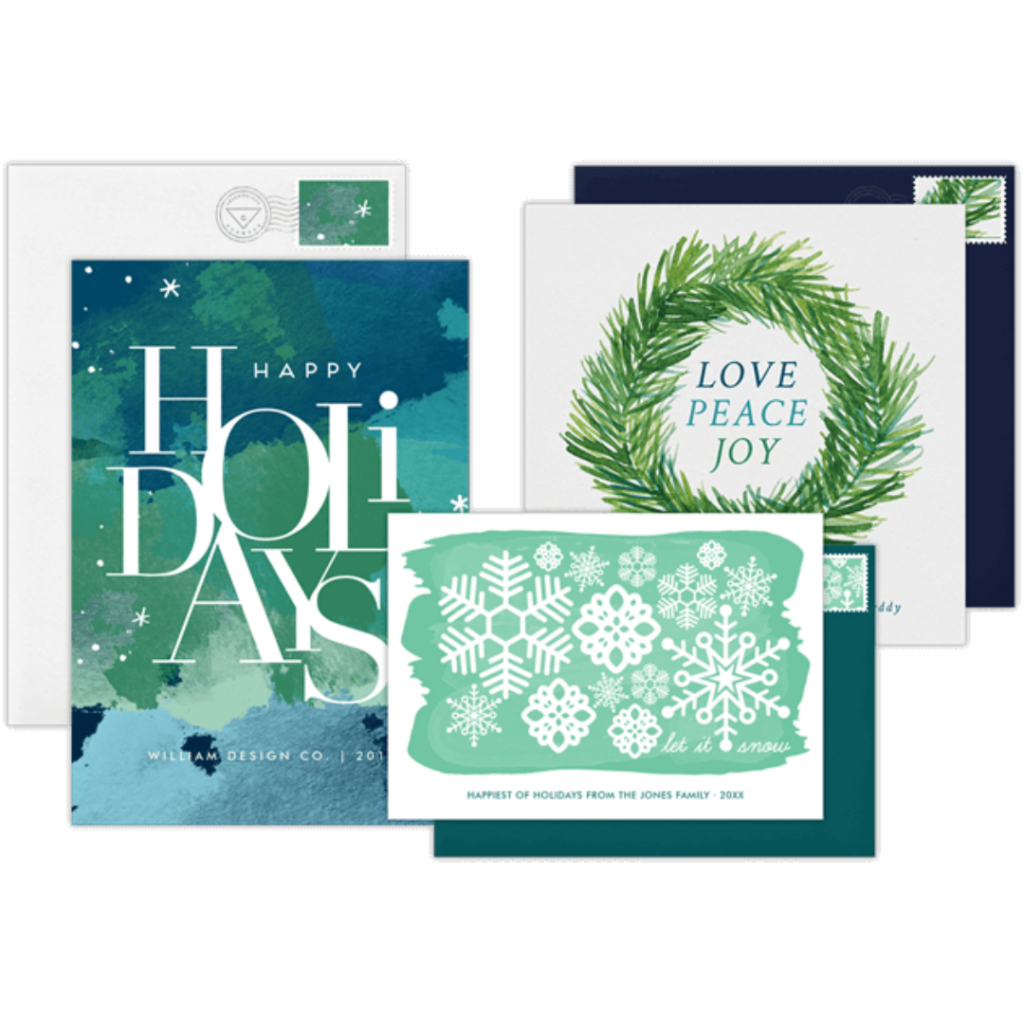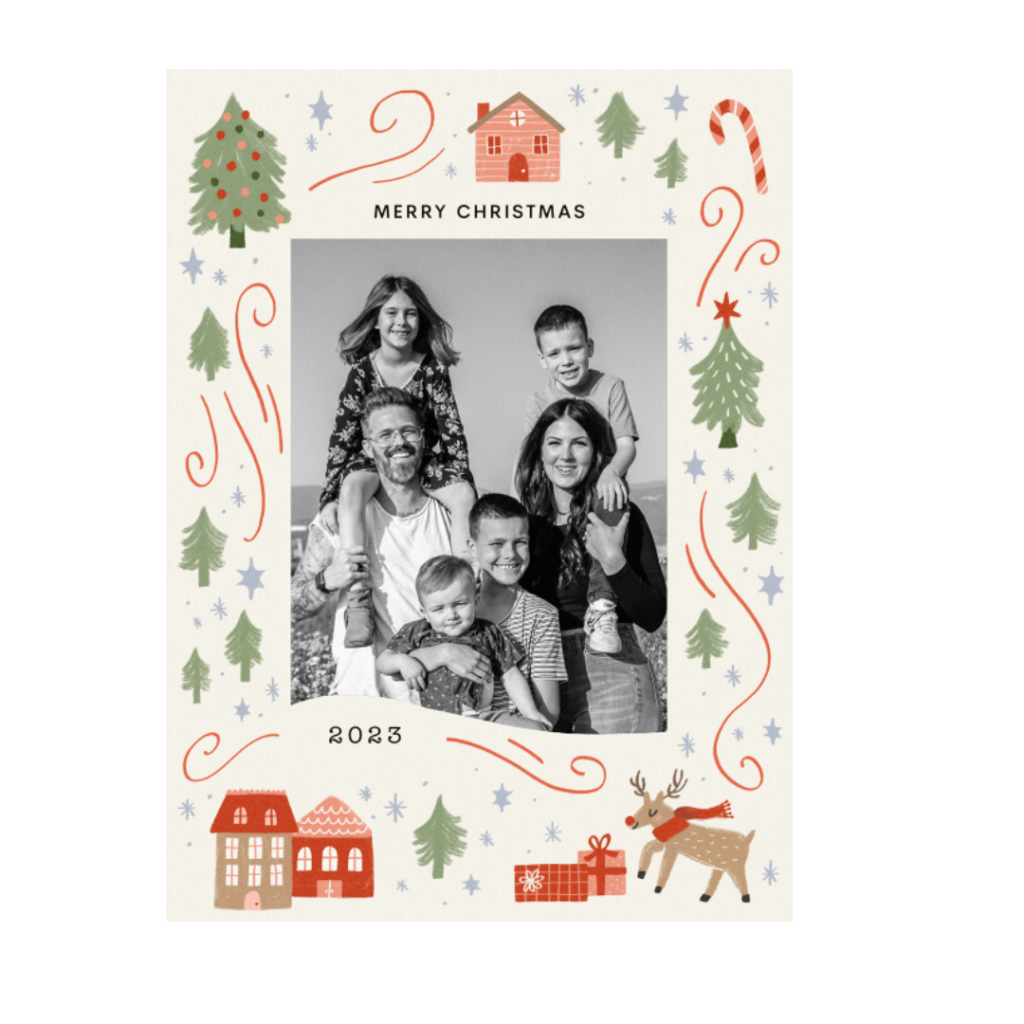Looking for the most eco-friendly holiday cards to send out this Christmas? To help you pick the right type of plastic-free holiday cards, we created a full guide of materials and alternatives from truly sustainable brands in 2024. Here’s how you can send your eco-conscious holiday greetings with seed paper holiday cards, paperless zero-waste holiday cards, and affordable biodegradable Christmas cards.
For more eco-friendly holiday guides, check out the:
Table of Contents
The Most Eco-Friendly Holiday Cards for Plastic-Free Greetings
It’s no secret that sending holiday cards is a time-honored tradition. From festive snowflakes to heartfelt messages, there’s something magical about a physical card landing in your mailbox. While it feels great to spread cheer with a handwritten message, have you ever stopped to think about what happens to all those cards after the holidays? Spoiler alert: most of them end up in the trash, not in a recycling bin.
Each year, millions of holiday cards are sent around the world, but many of them are made from non-recyclable materials like glitter, plastic coatings, and foil. And let’s not even talk about the paper—trees chopped down just to send a card that’s likely to be tossed after the new year.
But here’s the good news: There are dozens of sustainable holiday cards out thereOne of the easiest switches is choosing eco-friendly holiday cards made from recycled materials. Let’s also not forget that glitter might give your card that extra sparkle, but it’s also a microplastic disaster. The tiny flecks can easily end up in waterways, harming marine life. Instead, opt for biodegradable Christmas cards printed with non-toxic, vegetable-based inks.
Looking for something a little more interactive? Seed paper cards are a blooming brilliant idea! Sometimes, the most sustainable option is the one you make yourself. DIY holiday cards can be an opportunity to repurpose materials you already have at home – old magazines, fabric scraps, or even last year’s holiday cards. Not all holiday cheer needs to be delivered by snail mail.
Last, but not least, the most sustainable and 100% zero-waste holiday cards – e-cards! You can customize digital plastic-free holiday cards with photos, music, and animations, making them just as personal as physical cards – minus the waste.
Read on to find our favorite plastic-free holiday cards to send your eco-conscious holiday greetings this year.
Why are Christmas Cards So Wasteful?
At first glance, a holiday card looks like just paper, right? Well, not exactly. Most traditional cards are made from a mix of materials that range from paper to plastics, inks, and glitters. Here’s a breakdown of the most common materials and why they matter:
- Paper (Virgin and Recycled):
- Virgin Paper: A lot of holiday cards are made from virgin paper, meaning it’s made from freshly cut trees. While the texture might feel luxurious, this is the most resource-intensive option, contributing to deforestation and significant water and energy use during production.
- Recycled Paper: Some cards are made with recycled paper, which is a step up in sustainability. But many traditional holiday cards don’t use recycled content, and that’s where we run into trouble—every new card is another demand for new resources.
- Glitter, Foil, and Plastic Coatings:
- Glitter: We all love a little sparkle during the holidays, but that sparkle can be deceiving. Most glitter is made from microplastic, which can’t be recycled and often ends up in landfills—or worse, waterways. Once there, it can harm wildlife, especially marine animals, and become part of the larger problem of microplastic pollution. 🌊✨
- Foil and Metallic Accents: While foil might add a chic, festive touch, it makes cards non-recyclable. Most recycling centers can’t process mixed materials like paper with metallic foil, so these cards end up in the trash.
- Plastic Coatings: Many cards use a glossy plastic coating for durability or to create a high-shine look. This coating not only prevents recycling but also contributes to plastic waste, which can take centuries to break down.
- Inks:
- Traditional Chemical Inks: Many holiday cards are printed with chemical-based inks. These inks can contain harmful compounds like VOCs (volatile organic compounds), which contribute to air pollution and can be harmful to human health when produced in large quantities.
- Non-Toxic Inks: On the flip side, some eco-friendly holiday cards use vegetable-based or water-based inks, which are much less harmful to the environment. These inks are renewable, biodegradable, and don’t release harmful chemicals during production or disposal.
What’s Wrong with Glitter and Foil?
Glitter and foil may add that extra festive touch, but they’re major culprits in making holiday cards non-recyclable. Here’s why they’re a problem:
- Glitter: When glitter gets washed away (yes, that includes the glitter on your cards!), it enters waterways and can be ingested by fish and other marine life. Since it doesn’t degrade, it builds up in the environment over time, contributing to the growing issue of microplastic pollution. Studies have even found glitter in oceans and, eventually, in the food chain.
- Foil and Metallics: Cards with foil are tough to recycle. Why? Because recycling facilities can’t easily separate the foil from the paper, the metallic finish clogs up recycling machines. When these cards are sent to recycling centers, they’re often rejected and end up in the landfill. Not exactly the holiday spirit we’re aiming for.
Why Are Some Inks Harmful?
Most holiday cards are printed with traditional chemical-based inks. These inks often contain VOCs, which evaporate into the air during printing and can contribute to air pollution. VOCs aren’t just bad for the planet; they’re also harmful to human health, particularly for workers in printing facilities.
On the other hand, some eco-friendly holiday cards use vegetable-based inks, which are a more sustainable choice. These inks are made from renewable resources (like soy, corn, or linseed), are biodegradable, and don’t release harmful VOCs. Not only do they have a lower environmental impact, but they also create vibrant, long-lasting colors that are just as beautiful as their chemical counterparts.
The Plastic Problem in Holiday Cards
While plastic may not be obvious in every holiday card, it’s often lurking in places like laminated coatings, plastic packaging, and even some card embellishments. Plastic waste is particularly harmful because it doesn’t biodegrade; instead, it breaks down into microplastics that persist in the environment for hundreds of years. Many cards come wrapped in plastic sleeves to protect them, but that packaging is single-use and often ends up in landfills.
The good news is, there are alternatives! Some companies are turning to biodegradable plastics or skipping the plastic wrap altogether, opting for paper or compostable alternatives instead.
The Environmental Impact of Traditional Holiday Cards
How Much Waste Do Holiday Cards Create?
You might be wondering, “How big of a deal could it be?” Well, it’s bigger than you’d think! Each year, over 1.3 billion holiday cards are sent in the United States alone. If we stacked those cards, they could circle the Earth five times! That’s a whole lot of paper going out, and guess what? A lot of it isn’t making it back to the recycling bin.
In the UK, roughly 1 billion cards are tossed in the trash each year after the holidays. All of those cards contribute to waste in landfills, and many aren’t recyclable due to fancy finishes like glitter or foil. We’re talking thousands of tons of paper waste each year from cards alone.
Where Do These Cards End Up?
Let’s be real. A good chunk of these cards ends up in landfills. Sure, you might keep a few special ones on the fridge for a bit, but by January, they’re probably headed for the bin. Traditional holiday cards that contain glitter, metallic accents, or plastic coatings can’t be recycled, meaning they contribute directly to landfill waste. Over time, this builds up and adds to our already staggering waste problem.
And those fancy cards with glitter? They’re even worse! Glitter is basically tiny plastic, which can break down into microplastics and end up in our water systems, where they pose serious risks to marine life.
How Much Energy and Water Does It Take to Produce Cards?
Holiday cards may look small, but their production leaves a big environmental footprint. Here’s a quick rundown of what goes into creating your average holiday card:
- Paper production: Trees are harvested to produce the paper, which uses tons of water and energy. The pulp and paper industry is one of the largest industrial water users globally.
- Printing: Chemical-based inks and dyes are used in mass production, many of which release volatile organic compounds (VOCs) into the air, contributing to air pollution.
- Transportation: Once those cards are printed, they need to be shipped. All those trips—factories to stores, stores to your home, then from your mailbox to your aunt’s house—add up in terms of carbon emissions from trucks, planes, and delivery vehicles.
And let’s not forget that producing just one ton of paper requires roughly 17 trees and over 20,000 gallons of water. That’s like filling an entire swimming pool just for your stack of holiday cards. Yikes!
What Are Sustainable Holiday Cards?
A sustainable holiday card is one that’s designed with minimal environmental impact in mind. Whether it’s the materials, production process, or disposal, every step is thoughtfully planned to reduce waste and harm to the planet. Here’s what to look for when choosing an eco-friendly card:
Recycled or Sustainable Paper: The most crucial element is the paper. Sustainable and eco-friendly holiday cardsare often made from 100% recycled paper, or at least a high percentage of post-consumer waste (paper that’s already been used and recycled). This means fewer trees are cut down to produce the cards, and existing paper gets a second life. Some sustainable cards are even made from tree-free paper, like bamboo or cotton, which are renewable resources that don’t require deforestation.
Biodegradable or Plantable Materials: Some eco-friendly cards take it a step further by using biodegradable materials that will naturally break down over time, leaving no waste behind. The most innovative option? Seed paper cards. These cards are made from biodegradable paper embedded with seeds, so when your recipient is done enjoying the card, they can plant it in the soil, and flowers, herbs, or even vegetables will grow.
Non-Toxic, Vegetable-Based Inks: Traditional chemical inks can be harmful to the environment, but sustainable holiday cards often use vegetable-based inks. These inks are derived from renewable sources like soy or flax and are much less toxic to produce and dispose of. They still offer vibrant colors but with a smaller carbon footprint.
Plastic-Free and Compostable Packaging: Many eco-friendly holiday cards avoid using plastic in their packaging altogether. Instead, they might come in paper sleeves, compostable bags made from plant-based materials, or with no additional packaging at all. Plastic-free is the way to go if you want to ensure your cards don’t contribute to the global plastic problem.
Minimal or No Embellishments: Eco-friendly cards typically avoid non-recyclable embellishments like glitter, foil, or laminated finishes. If they do have embellishments, they’ll likely be made from biodegradable alternatives (like plant-based glitter or natural dyes) that won’t pollute the environment.
Types of Sustainable Holiday Cards to Consider
Eco-friendly holiday cards come in many forms, from simple recycled paper options to creative, interactive designs that let you give a little back to the earth. Here are the most common types of sustainable holiday cards:
Recycled Paper Cards: The easiest way to reduce waste is to choose cards made from recycled paper. These cards often come with an FSC (Forest Stewardship Council) certification, meaning the paper is sourced responsibly. Look for cards that specify they’re made from post-consumer recycled content, which ensures they’re using paper that’s already been used and recycled. Every time you choose recycled over virgin paper, you’re helping save trees, water, and energy.
Seed Paper Cards: A fan favorite in the sustainable world, seed paper cards are made from biodegradable paper embedded with seeds. After the holidays, your recipient can plant the card and grow wildflowers, herbs, or even vegetables. Not only do these cards leave zero waste, but they actively contribute to the environment by promoting plant growth.
Postcard-Style Cards: Postcard-style holiday cards eliminate the need for an envelope, reducing the materials used. These cards use less paper overall and are typically lighter, which means they require less energy to ship. While they may be simple, they’re a great way to cut down on waste without losing the festive spirit.
Plantable or Biodegradable Cards: Some cards are made from materials that are designed to break down naturally. Plantable cards, as mentioned earlier, contain seeds, but there are also cards made from fully compostable materials that can go straight into the compost bin after the holidays. These cards may be made from hemp, cotton, or even agricultural waste, giving them a second life as something useful rather than trash.
Handmade or Locally Produced Cards: Supporting small businesses or local artisans is another way to reduce your environmental footprint. Locally produced cards cut down on shipping distances, which means fewer carbon emissions. Many small businesses use sustainable practices, like handmade paper, non-toxic inks, or unique upcycled materials. And the best part? Handmade cards add a personal touch that mass-produced ones just can’t compete with.
What Certifications Should I Look For in Eco-Friendly Christmas cards?
When shopping for sustainable holiday cards, certifications can help you identify genuinely eco-friendly cards. Here are a few key ones to look out for:
- FSC Certification (Forest Stewardship Council): Ensures that the paper used comes from responsibly managed forests or recycled sources.
- Rainforest Alliance Certified: Guarantees that the materials used support sustainable forestry and wildlife conservation.
- Carbon Neutral: Some brands offer carbon-neutral cards, meaning they offset the carbon emissions generated during the production and shipping processes.
- Cradle to Cradle Certification: Indicates that a product is designed with sustainability in mind from start to finish, with materials that can be reused or safely composted.
3 Best Recycled Holiday Cards
3 Best Seed Paper Holiday Cards for Christmas
4 Plastic-Free Digital Holiday Cards Brands
These were the most sustainable holiday cards for Christmas!
We hope this helped you find the best eco-friendly Christmas cards for your friends and family! Holiday cards don’t have to come at the cost of the environment. You can go with plastic-free and sustainable holiday cards with material options like recycled paper cards, zero-waste holiday cards, plantable seed paper, or even going digital, you can still send all the festive vibes without leaving a trail of waste behind. The options are endless! Whether you send a beautiful recycled paper card or go all out with a plantable one, your choices can reflect both your love for others and your commitment to protecting the Earth.
